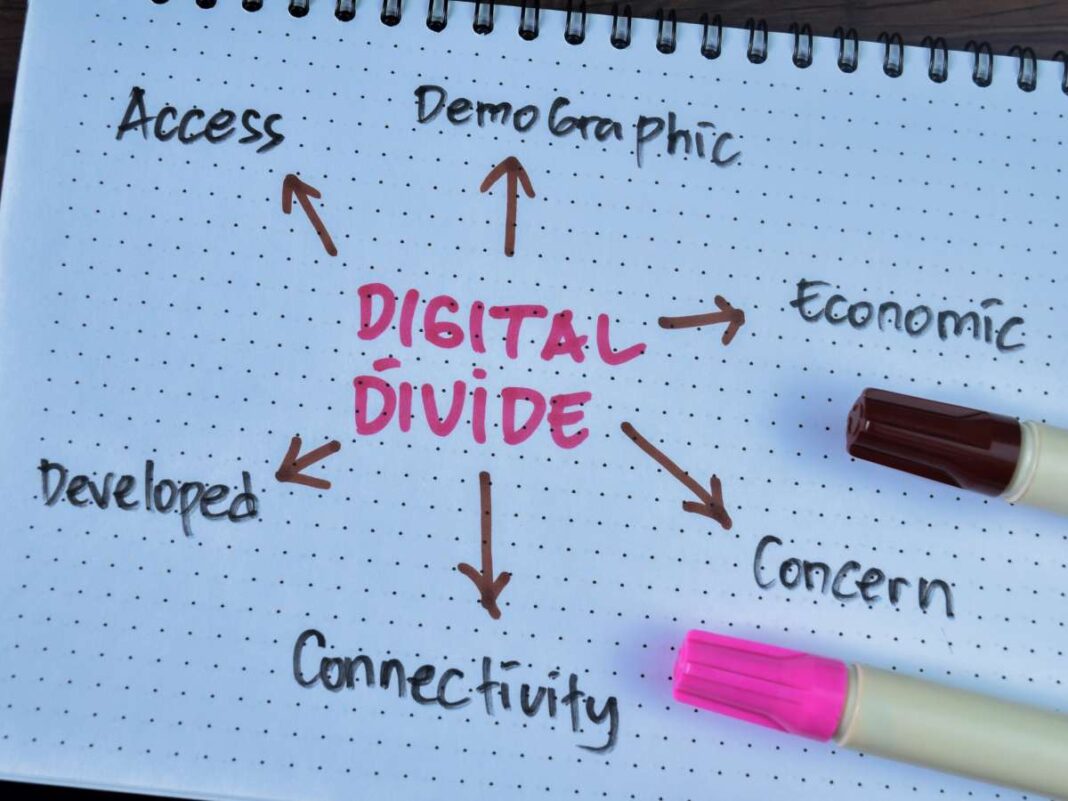In today’s digital world, access to technology and the internet has become essential for equitable education. Yet, millions of students across the globe find themselves on the wrong side of the digital divide, unable to harness the benefits of modern learning tools. The digital divide refers to the gap between individuals or entities with sufficient access to online technologies and those without access to the internet. This divide has profound implications for education, affecting students’ academic performance, future job prospects, and overall opportunities in life.
Understanding the Digital Divide
The term “digital divide” emerged in the mid-1990s to describe the disparity between individuals with and without access to computers and the internet. While the initial focus was on physical access to technology, the divide now encompasses a range of issues, including digital literacy and the quality of internet connectivity.
Key Factors Contributing to the Divide
- Socioeconomic Disparities: Income levels significantly impact access to technology. Households with lower incomes often lack reliable internet service and devices, hindering students’ ability to participate in digital learning.
- Geographic Location: Rural areas frequently suffer from inadequate broadband infrastructure, resulting in slower internet speeds or no access at all. In fact, rural communities face significant challenges due to limited connectivity options.
- Educational Resources: Schools in underfunded districts may not have the necessary technology or training to support digital learning, contributing to a digital use divide where students engage with technology in less meaningful ways.
The Impact on Education
The digital divide has far-reaching consequences for students’ educational experiences. Those without adequate access to technology are at a distinct disadvantage, leading to:
- Lower Academic Performance: Students lacking internet access are unable to complete assignments or access online resources, resulting in lower grades and reduced competitiveness compared to their peers.
- Limited Future Opportunities: Without digital skills, students may find it hard to succeed in higher education or the workforce, where such competencies are increasingly essential. The absence of digital literacy can diminish career readiness and economic growth.
- Exacerbated Inequalities: The divide disproportionately affects marginalized groups, including students of color and those from low-income families, thereby widening existing educational disparities.
Addressing the Digital Use, Design, and Access Divides
The U.S. Department of Education’s Office of Educational Technology highlights three facets of the digital divide: the digital use divide, the digital design divide, and the digital access divide.
Digital Use Divide
This refers to the varying ways students engage with technology. While some benefit from interactive and creative uses, others are limited to passive consumption. Schools can bridge this gap by providing diverse digital tools that empower students to create and collaborate.
Digital Design Divide
Educators often lack the professional development and time needed to design inclusive, technology-enabled learning experiences. Supporting teachers with adequate training and resources is crucial for effective technology integration.
Digital Access Divide
This divide encompasses the inequitable availability of devices and internet connectivity. Despite advancements, millions of students still lack reliable internet and technology tools. Ensuring equitable access requires investing in infrastructure and providing students with the necessary devices.
Efforts to Bridge the Divide
Multiple stakeholders, including governments, organizations, and private entities, are working to close the digital divide.
Government Initiatives
The Infrastructure Investment and Jobs Act allocates significant funding to improve high-speed internet access, particularly in rural areas. This includes provisions for affordable connectivity programs and efforts to eliminate digital redlining.
Educational Programs
Organizations like the Center for American Progress advocate for policies that integrate innovative educational technology into classrooms. They emphasize the need for federal grants and partnerships to support technology use in education.
Community Efforts
Local programs play a key role in addressing the digital divide. For instance, the United Way of Champaign County is committed to closing the gap to help kids thrive by providing resources and funding to ensure students can access technology.
Private Sector Contributions
Companies like Learning.com are partnering with districts to equip K-12 students with essential digital skills, recognizing that technological proficiency is crucial for future success.
A Call to Action
Bridging the digital divide is not just about providing devices and internet access; it’s about ensuring all students can fully participate in a digital society. This requires a multifaceted approach that addresses infrastructure, affordability, digital literacy, and ongoing support for educators.
Recommendations
- Invest in Infrastructure: Expand broadband networks to underserved areas to ensure all students have high-speed internet access.
- Provide Affordable Access: Implement programs that make internet services and devices affordable for low-income families.
- Enhance Digital Literacy: Offer training for students, educators, and caregivers to develop the skills needed to use technology effectively.
- Support Educators: Provide professional development opportunities that enable teachers to incorporate online technologies into their teaching practices meaningfully.
- Foster Collaboration: Encourage partnerships between governments, schools, communities, and private businesses to bring their resources and expertise together.
Conclusion
The digital divide in education is a complicated issue that demands immediate and sustained action. By understanding the contributing factors and working collaboratively, society can solve the digital divide and create equitable learning opportunities for all students. The goal is clear: to empower every student, regardless of their background or circumstances, with the tools and skills required to succeed in an increasingly digital world.
